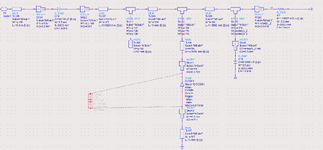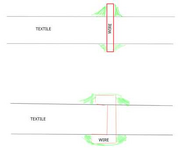jdstavares
Junior Member level 2
Hi everyone, I have a question regarding my rectifier circuit. I performed it in ADS software, and there I obtained an efficiency of ~30%. However, when producing the rectifier, I measured it and instead of the ~30% I obtained ~0.5% efficiency.
The rectifier is on a textile substrate and the conductive lines are made through conductive ink. The smd components are soldered into small copper sheets (just to ensure contact between the smd pads and the circuit), which I did not consider in the simulations, and then integrated with the ink. Nevertheless, I did not expect such a discrepancy.
Can someone give some input on what might be happening?
The rectifier is on a textile substrate and the conductive lines are made through conductive ink. The smd components are soldered into small copper sheets (just to ensure contact between the smd pads and the circuit), which I did not consider in the simulations, and then integrated with the ink. Nevertheless, I did not expect such a discrepancy.
Can someone give some input on what might be happening?

